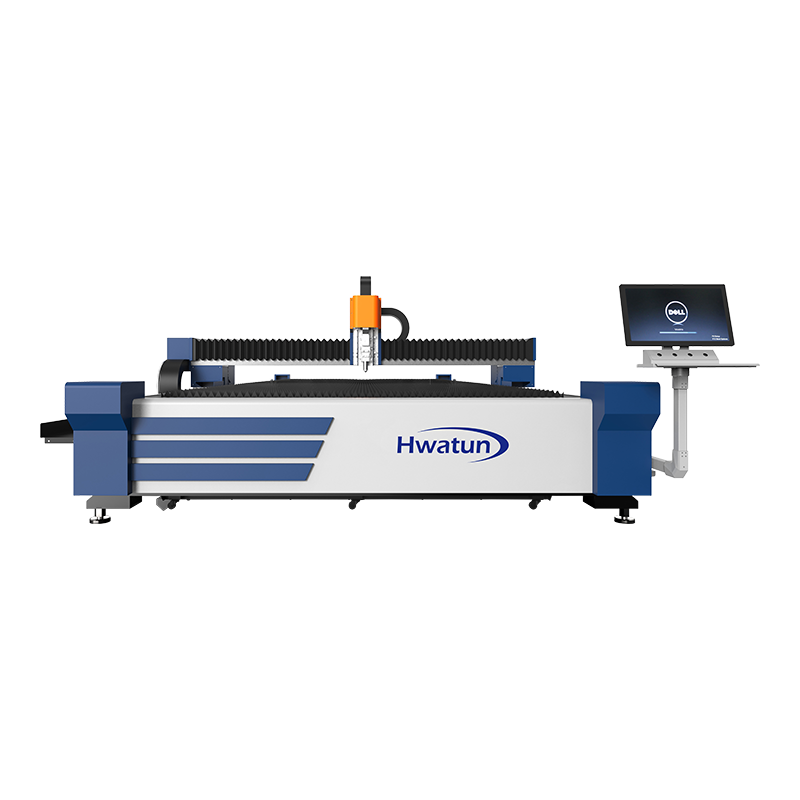Web Menu
Product Search
Exit Menu
How is the compatibility of CNC laser cutting machine reflected in the automation integration of the control system?
The compatibility of CNC laser cutting machines is significantly reflected in the automation integration of their control systems. This compatibility enhances operational efficiency, flexibility, and overall productivity. Here’s a detailed exploration of how this integration manifests:
CNC laser cutting machines can be integrated with various automation systems, such as robotic arms, conveyor belts, and material handling systems. This compatibility allows for seamless communication and coordination between machines, enabling a fully automated production line. For instance, a robotic arm can automatically load and unload materials to and from the laser cutter, minimizing manual intervention and reducing production time.
Many CNC laser cutting machines utilize standardized communication protocols, such as Ethernet/IP, Profibus, or Modbus. These protocols facilitate interoperability with other automated equipment, allowing different machines to communicate effectively. This ensures that data, such as job status, error messages, and production metrics, can be shared across the system, enhancing overall operational visibility.
The integration of automation within the control system allows for real-time monitoring of the cutting process. Operators can track parameters such as speed, power, and material usage from a centralized interface. This capability enables immediate adjustments to be made in response to changing conditions, ensuring optimal performance and reducing downtime.
CNC laser cutting machines integrated into an automated system can collect and exchange data with other devices. This data can be analyzed to identify trends, optimize cutting parameters, and predict maintenance needs. By leveraging data analytics, manufacturers can enhance operational efficiency, improve product quality, and reduce waste.
Automation integration enables sophisticated job scheduling and management capabilities. The control system can prioritize tasks based on material availability, machine status, and production deadlines. This dynamic scheduling helps maximize machine utilization and minimizes idle time, leading to increased productivity.

Modern CNC laser cutting machines often feature user-friendly interfaces that allow operators to manage integrated automation systems easily. These interfaces enable users to set up, monitor, and control multiple machines from a single location. Simplified controls help operators manage complex tasks efficiently, reducing the learning curve and improving overall operational effectiveness.
CNC laser cutting machines designed with compatibility in mind can be customized to fit specific automation needs. Manufacturers can scale their systems by adding new machines or automation components without significant reconfiguration. This flexibility ensures that businesses can adapt to changing production demands while maximizing their existing investments.
Automation integration can also improve safety in CNC laser cutting operations. Systems equipped with sensors and safety interlocks can automatically shut down the machine in case of detected anomalies or hazards, protecting both equipment and personnel. This compatibility with safety protocols enhances the overall safety of automated environments.
The compatibility of CNC laser cutting machines in terms of automation integration significantly enhances their functionality and efficiency. By enabling seamless communication with other automated systems, leveraging standardized protocols, and providing real-time monitoring and data analytics, these machines can operate as part of a cohesive and efficient manufacturing ecosystem. As industries continue to embrace automation, the compatibility of CNC laser cutting machines will play a critical role in optimizing production processes and meeting the demands of modern manufacturing.
News categories
Product categories
Related Products
 +86-159 5138 1316
+86-159 5138 1316 +86 180 6819 3096
+86 180 6819 3096 [email protected]
[email protected] Group 4, Xinba Village, Binhai New Area (jiaoxie Town), Laoba Port, Nantong City, Jiangsu, China.
Group 4, Xinba Village, Binhai New Area (jiaoxie Town), Laoba Port, Nantong City, Jiangsu, China.
Copyright © Nantong Hwatun Heavy Machine Tool Co., Ltd. All Rights Reserved.

 Eng
Eng  简体中文
简体中文 Español
Español русский
русский







